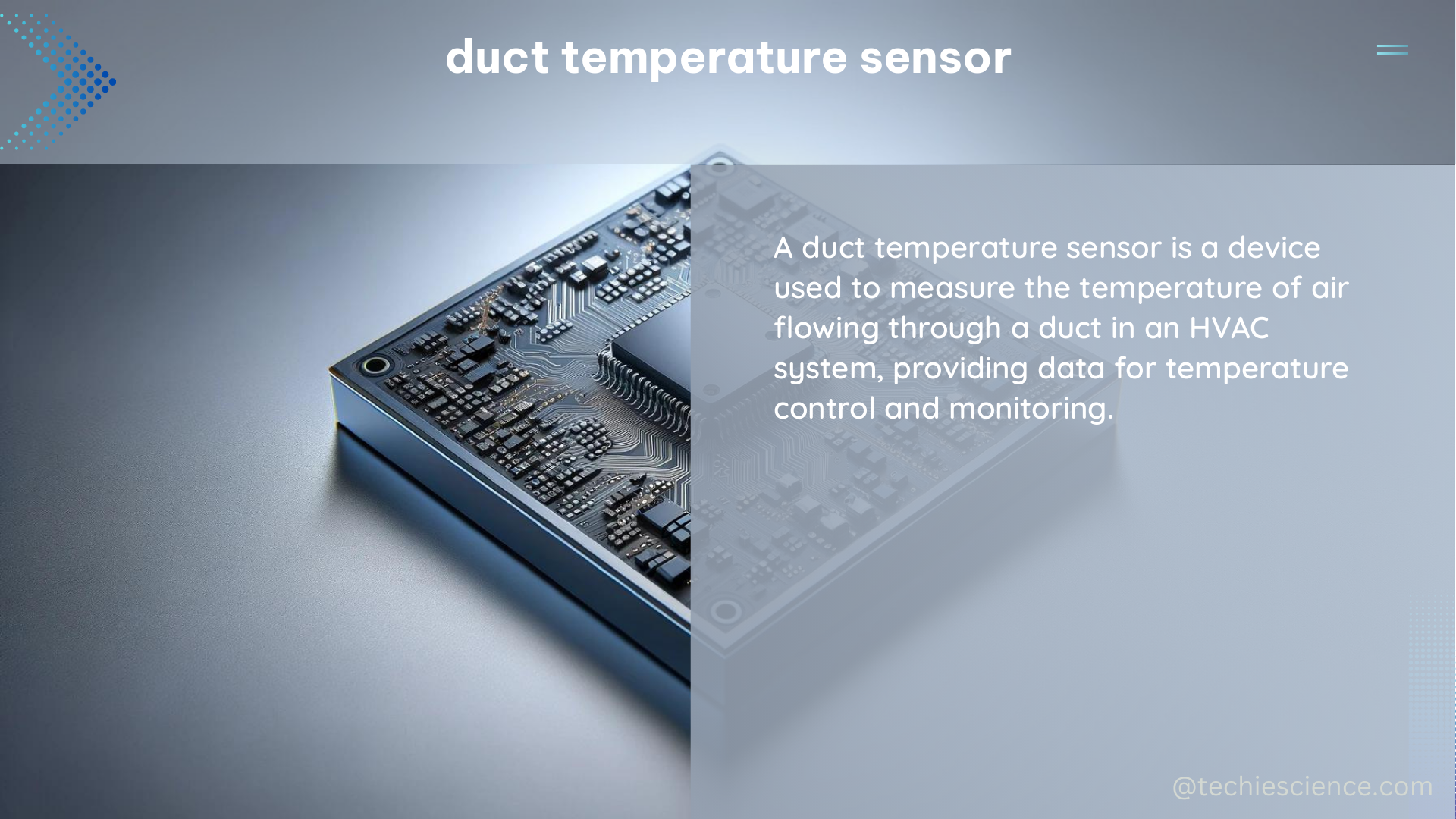A duct temperature sensor is a critical component in HVAC systems, responsible for accurately measuring the air temperature within ductwork. These sensors play a vital role in maintaining optimal temperature conditions, ensuring occupant comfort, and optimizing energy efficiency. In this comprehensive guide, we will delve into the technical details and best practices surrounding duct temperature sensors.
Temperature Range and Accuracy
Duct temperature sensors are designed to operate within a wide range of temperatures, typically from -40°F (-40°C) to 650°F (343°C) or even wider, depending on the specific model and application. The accuracy of these sensors is crucial, as it directly impacts the performance of the HVAC system.
For control applications, a typical duct temperature sensor should have an accuracy of ±0.3°F (0.16°C) to ±0.5°F (0.28°C). However, for energy consumption calculations or billing purposes, the sensor accuracy may need to be significantly better, with a tolerance of within ±0.1°F (0.056°C) of each other.
Response Time

The response time of a duct temperature sensor refers to the time it takes for the sensor to reach 63.2% of the final value after a step change in temperature. Typical response times for duct temperature sensors range from 0.5 seconds to 10 seconds, depending on the sensor type and design.
A faster response time is generally desirable, as it allows the HVAC system to react more quickly to changes in air temperature, improving overall system efficiency and comfort.
Sensor Types
Duct temperature sensors come in various types, each with its own unique characteristics and applications:
-
Thermocouples: Thermocouples are known for their fast response time and low cost. They are commonly used in HVAC applications where a quick reaction to temperature changes is required.
-
Resistance Temperature Detectors (RTDs): RTDs offer high accuracy and stability, making them suitable for applications where precise temperature measurements are critical, such as energy consumption calculations or billing.
-
Thermistors: Thermistors have a larger temperature coefficient, making them highly sensitive to temperature changes. They are often used in applications where a high degree of temperature sensitivity is required.
The choice of sensor type will depend on the specific requirements of the HVAC system and the desired performance characteristics.
Installation and Calibration
Proper installation and calibration of duct temperature sensors are crucial for ensuring accurate temperature measurements and optimizing HVAC system performance.
Installation
Duct temperature sensors should be installed as close to the existing sensor as possible, using P/T taps if available. Contact probes can be used for calibration, but they should not be used for calibration purposes, as they may not provide an accurate representation of the duct air temperature.
In hydronic flow measurement applications, a portable ultrasonic flow sensor is recommended for calibration, as it can provide a more accurate measurement of the fluid flow rate.
Calibration
Calibration of duct temperature sensors should be performed regularly to ensure accurate measurements. The general calibration procedures and tolerances can be found in the Commissioning section of Appendix A: Sample Control Specification Language.
During the calibration process, it is essential to follow the manufacturer’s instructions and use appropriate calibration equipment, such as a reference thermometer or a temperature calibrator. Proper calibration techniques can help maintain the sensor’s accuracy and ensure the HVAC system operates at its optimal performance.
Advanced Considerations
When selecting and installing duct temperature sensors, it is crucial to consider the specific requirements of the application, such as temperature range, accuracy, response time, and sensor type. Additionally, factors like environmental conditions, sensor placement, and integration with the HVAC control system can also impact the sensor’s performance.
In some cases, advanced features like wireless communication, remote monitoring, or self-diagnostics may be desirable to enhance the overall system functionality and maintenance.
Conclusion
Duct temperature sensors are essential components in HVAC systems, responsible for accurately measuring air temperature within ductwork. By understanding the technical details and best practices surrounding these sensors, HVAC professionals can ensure optimal system performance, energy efficiency, and occupant comfort.
Whether you’re designing a new HVAC system or maintaining an existing one, this comprehensive guide on duct temperature sensors will provide you with the knowledge and insights to make informed decisions and achieve the desired results.
References
- Retro-Commissioning Process Manual, CFM, VA, 2014.
- 40 CFR Part 98 — Mandatory Greenhouse Gas Reporting, eCFR.
- Energy Management Systems, MSBO, 2016.
- ENERGY SAVINGS TOOLBOX – An Energy Audit Manual and Tool, NRCan, 2011.
- CONTROL VALVE HANDBOOK, Emerson, 2015.

The lambdageeks.com Core SME Team is a group of experienced subject matter experts from diverse scientific and technical fields including Physics, Chemistry, Technology,Electronics & Electrical Engineering, Automotive, Mechanical Engineering. Our team collaborates to create high-quality, well-researched articles on a wide range of science and technology topics for the lambdageeks.com website.
All Our Senior SME are having more than 7 Years of experience in the respective fields . They are either Working Industry Professionals or assocaited With different Universities. Refer Our Authors Page to get to know About our Core SMEs.